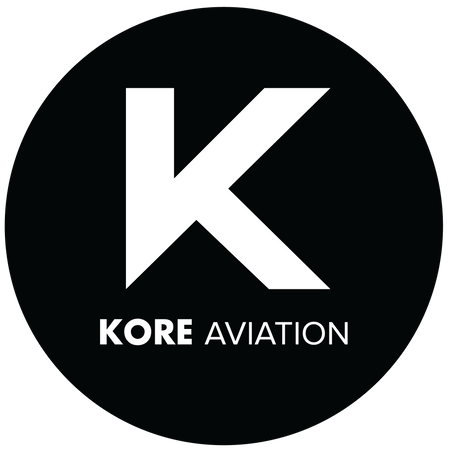
Kore Aviation - As a student pilot, you’re probably still figuring out what to expect and how to get started. The first step in aviation is familiar yourself with the rules, training with instructors, and preparing for your solo flight. All are on their way to becoming certified pilots under FAA guidelines.
There are several types of pilot licenses and certificates, each with its own requirements. But with the right instructor, a student pilot can unlock key milestones such as solo flying.
FAA Requirements to Become a Student Pilot
Following the FAA’s requirements for student pilot certification, there are a few essential prerequisites that must be met before flight training can begin:
- Age requirement: At least 16 years old to pilot an airplane, or 14 for gliders and balloons.
- English language proficiency: Students must be able to read, write, speak, and understand English to ensure clear and safe communication.
- Medical certification: Most student pilots need a Third-Class FAA medical certificate, issued by an FAA-authorized medical examiner, to confirm they are physically fit to fly.
After approval, you will seek a student pilot certificate through the IACRA (Integrated Airman Certification and Rating Application) online portal, managed by the FAA.
After your certificate is approved, your flight training can officially begin.
Flight School or Independent Instructor?
Student pilots usually choose one of the two (2) paths for training: enrolling in a formal flight school or working with an independent flight instructor. Both options are legitimate and can lead to certification, but their approaches and structures differ.
Flight schools operating under Part 141 of the FAA regulations follow a structured curriculum and are ideal for full-time students. They often cater to career pilots, offering accelerated programs, and classroom support.
On the other hand, Part 61 instruction through independent instructors offers more flexibility, which is more popular with part-time students. Part 61 can be slightly more budget-friendly, though it may take longer depending on your availability.
Choosing between the two depends on your goals, budget, and the time commitment you are willing to make. Both paths have led countless student pilots to the skies successfully.
Inside the Life of a Student Pilot
Once you begin training, your life as a student pilot revolves around ground and flight instruction. Ground school covers the theoretical aspects of flying, including aerodynamics, weather systems, airspace rules, and FAA regulations. This knowledge prepares you for the FAA written test, which is required for solo flight and certification.
Flight training is where the real excitement begins. You’ll learn pre-flight inspection procedures, communication with air traffic control, takeoff and landing techniques, emergency protocols, and more. During the initial stages, you’ll always be flying with an instructor. Once you’ve demonstrated specific skills, you’ll get a solo flight endorsement from your instructor, an unforgettable milestone in every student pilot’s journey.
Solo flights are limited in scope and require strict adherence to safety regulations, but they provide critical experience and build your confidence as a pilot.
Discover more: https://www.koreheadset.com/blogs/blog/how-hard-is-it-to-become-a-pilot
What Is a Student Pilot Certificate?
Your student pilot certificate is more than just a piece of paper, it’s a legal document issued by the FAA that authorizes you to fly solo under specific conditions. It does not expire, though your instructor must endorse it for each solo or set of flights.
While holding this certificate, you're still in training and cannot carry passengers, fly for hire, or operate in complex airspace without a proper endorsement. Think of it as your learner’s permit for flying. Once you earn your Private Pilot Certificate, those restrictions are lifted, and you gain more freedom in the skies.
Costs You Can Expect as a Student Pilot
One of the most common questions is, “how much does it cost to become a student pilot?” The answer depends on several factors, including the aircraft type, the flight school or instructor you choose, and how often you train.
To complete your training and earn your private pilot certificate, you can expect to spend between $8,000 and $15,000. This includes instruction, aircraft rental, ground school, FAA testing fees, and medical examination costs.
Here’s a simplified breakdown:
- Flight instruction and aircraft rental: $6,000–$12,000
- Ground school materials and supplies: $300–$500
- FAA medical exam: $75–$150
-
Written exam and check ride: $500–$800
These costs can vary by region and aircraft type, but consistent training and good planning can help keep your budget under control.
Tips for Student Pilot Success
As a student pilot, your learning curve will be steep, but incredibly rewarding. To succeed in your training, keep a few tips in mind:
- Fly regularly: Gaps between lessons can set you back and lead to more review time.
- Be proactive in studying: Use ground school apps, flashcards, or FAA manuals to prepare.
- Stay organized: Keep a detailed logbook and track your progress.
-
Use quality gear: A dependable aviation headset is critical for clear communication and safety.
It's normal to feel overwhelmed at the beginning. The key is to stay motivated and ask questions because your instructor is there to help you learn and grow.
Final Thoughts: Becoming a Student Pilot Is Just the Beginning
Taking your first flight as a student pilot is profoundly exciting. It’s the moment you stop watching planes from the ground and start learning to command one from the cockpit. This phase of your journey builds the foundation for your aviation career or personal flying goals.
Remember, every experienced pilot was once a student. You can navigate the skies safely and confidently with the correct training, commitment, and mindset.
And don’t underestimate the value of quality gear during your training.
If you're looking for equipment that enhances comfort and communication during your training, Kore Aviation headsets are trusted by both students and experienced pilots for its noise-cancelling technology, comfort, and reliability in the cockpit. Investing in the right gear from the start makes every flight lesson more productive and enjoyable.
